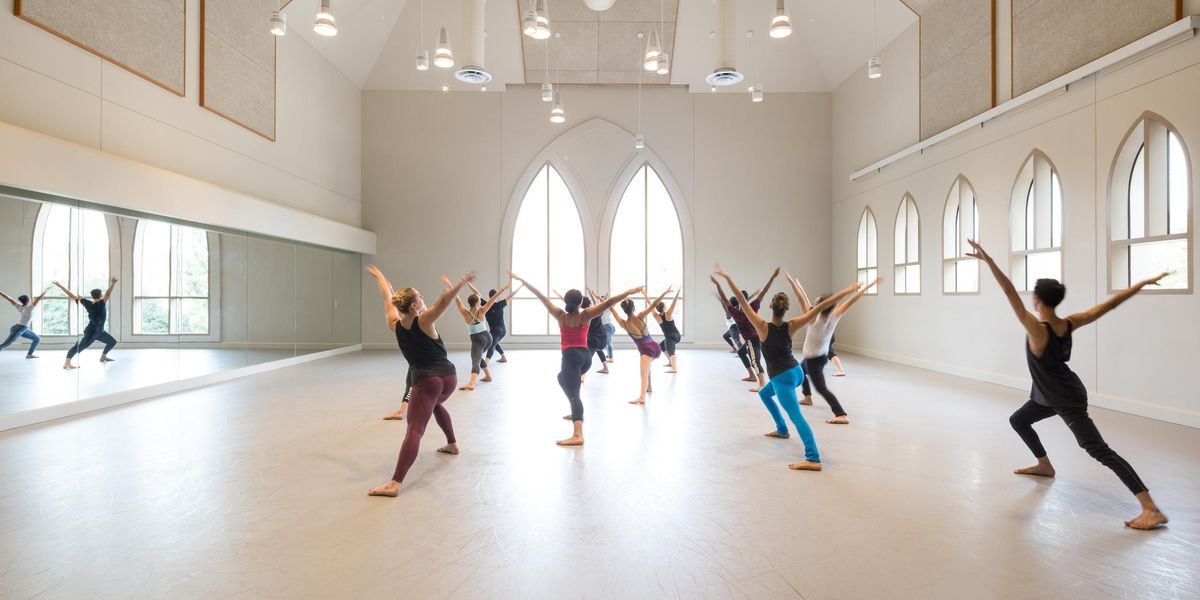The College Audition Solo: What Are Faculty Members Looking For?
A lot of pressure comes with dancing at an audition in a bare room alone—especially when it’s in front of panelists who decide how you will spend the next four years of your training. Boiling down years of technique and artistry into a few minutes of movement, the solo round can be the most nerve-racking portion of the college audition process. But smart dancers use the solo to their advantage, taking the opportunity to highlight their strengths and individuality.
The Components
The guidelines for audition solos are purposely vague to encourage diversity: Most schools welcome dances in any style, with time limits of up to two minutes. Regardless of whether dancers choose to perform a ballet, modern or contemporary piece, Juilliard School dance division director Lawrence Rhodes says he’s looking for the “wide variety of gifts the dancer might have and at their overall ability to move.”
Because faculty members have already watched prospective students in technique classes by the time they show their solos, dancers shouldn’t focus on tricks, but strong and distinctive qualities of their natural movement style. One way to feature individuality, suggests Sean Curran, chair of the dance department at New York University’s Tisch School of the Arts, is to dance a self-choreographed work. “I feel like I learn more about the dancer when they made what they are showing.”
Performing It
It’s vital for dancers to remember that at auditions, faculty members value potential over perfection. For Jo Rowan, chair of Oklahoma City University’s dance department, virtuosic technique is not a prerequisite for acceptance into the program. “We are really looking for personality and the ability to perform,” she says. Curran agrees: “It is the potential for a different kind of virtuosity that I am interested in. Can this dancer become a poet and be subtle? Are they capable of authenticity? How are they unique?”
The solo portion also allows faculty members to see how dancers deal with pressure. No matter what happens, the show must go on. “Mistakes are welcome,” says Rhodes. “They can be interesting and informative.” Alexandra Hutt, now in her second year at Juilliard, suggests approaching the experience as if it were a live performance. “That allowed me to let go and have a blast in the audition, and ultimately I believe that has something to do with why I got in.”
Show Your Strengths
It’s natural for dancers to feel nervous about solos, but this portion of the audition gives them a chance to show their best dancing while downplaying their weaknesses. And they can play with musicality and style in ways that can’t be revealed during a simple ballet combination.
There isn’t a magic formula for a successful audition—no dancer can know exactly what faculty members are thinking. The key to Hutt’s success was her combined physical and mental self-assurance. By the time she walked into the audition she had spent seven months rehearsing her solo and had already performed it twice. “It was completely etched into my muscle memory,” says Hutt. “I showed up, and trusted myself and all the work I had done that year, knowing that everything else was pretty much out of my hands.”
No Solo Required?
Not all undergraduate university dance program auditions require a solo. But most replace it with another audition component. For example, Ohio State University’s audition begins with a 30-minute improvisation section. Faculty members are looking to see how dancers problem solve. They also want to see how open-minded students are when asked to try something that may be out of their comfort zones. “During that section we really see your individuality, performance ability and an appetite for creativity,” says department chair Susan Van Pelt Petry. “We are really interested in what the potential is. If you love dance, just show it. We can see when people seem to have the spark.”




